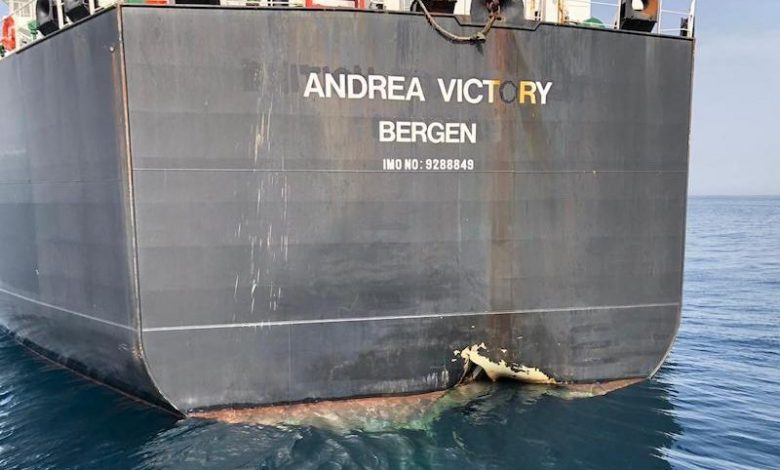US says Iranian limpet mines were used in Fujairah tanker attacks

The United States on Friday accused Iran’s Revolutionary Guards of being behind the May 12 attacks on four tankers off Fujairah. The US military is sending another 1,500 troops to the Middle East as tensions rise between Washington and Tehran.
Investigations into the attacks on the four tankers – two Saudi-flagged, one Norwegian and one from the UAE – are ongoing with no one claiming responsibility for them. It is believed limpet mines were used in the tanker attacks, which punctured holes in the stern of each vessel below the waterline. Insurer Lloyd’s has warned of significant claims from the attacks while the Joint War Committee of the London marine insurance market has extended the list of waters deemed as high risk to include Oman, the United Arab Emirates and the Gulf.
Rear Admiral Michael Gilday, the director of the Joint Staff in Washington, on Friday accused Iran’s Revolutionary Guards (IRGC) of being directly responsible for the tanker attacks.
“The attack against the shipping in Fujairah, we attribute it to the IRGC,” Gilday said, explaining that the Pentagon attributed limpet mines used in the attack directly to the IRGC.
Seperately, as first reported by Splash, Finnish company Iceye has confirmed that the Saudi-controlled Amjad VLCC, the largest ship targeted in the attacks, did suffer a sizeable bunker spill.
Iceye said one of its radar satellites detected a long trail leading from the Bahri-owned tanker.
The Iceye analysis of the spill has been validated by Norway’s Kongsberg Satellite Services, a company with expertise in oil slick detection.
The power of satellite radar. @iceyefi's X2 spacecraft took this image of the waters off Fujairah two days after an as yet unidentified group tried to sabotage tankers. Radar is particularly good at detecting oil on water. https://t.co/CzHUCUwbLU pic.twitter.com/806HV6UKuH
— Jonathan Amos (@BBCAmos) May 24, 2019
